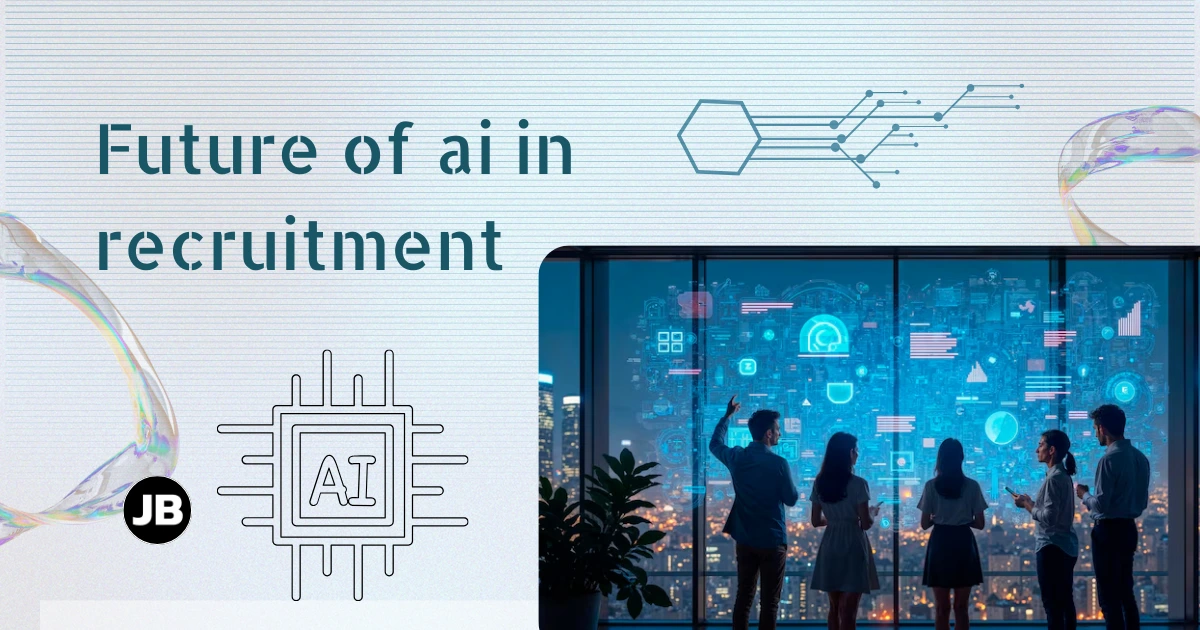Top AI Strategies That Are Shaping the Future of Banking in 2025

Overview
Table of Contents
- The Current State of AI in Banking
- Why AI Is Essential for Banking in 2025
- Future Trends of AI in Banking for 2025
- Benefits of AI for Banking and Financial Services Growth
- Top AI Strategies for Future-Proof Banking in 2025
- Challenges of Implementing AI in Banking
- Real-World Examples of AI in Banking
- Final Thoughts: AI Powered Banking Is the Future
- FAQs About AI in Banking
The banking industry is undergoing a major transformation powered by artificial intelligence (AI). From automating tasks to providing hyper-personalized services, AI is helping banks adapt to the changing expectations of digital-savvy customers.
In 2025, AI in banking will not be just a trend—it will be a critical competitive advantage.
In this blog, we will dive into:
- The role of AI in banking today
- Emerging AI trends in finance for 2025
- Top strategies to implement AI successfully
- Major benefits and real-world examples
- Challenges banks must navigate
The Current State of AI in Banking
AI is already influencing multiple areas in banking, such as:
- Fraud detection: Machine learning algorithms detect suspicious activities faster than manual systems.
- Customer service: AI chatbots and virtual assistants offer 24/7 banking support.
- Credit scoring: AI models evaluate a broader range of data to make better lending decisions.
- Personalized banking: AI analyzes transaction history to recommend personalized offers.

Why AI Is Essential for Banking in 2025
By 2025, AI will help banks:
- Provide smarter, faster customer interactions
- Create ultra-secure, real-time fraud prevention
- Streamline operations with predictive analytics
- Customize financial advice for each user
- Comply with evolving global regulations
Banks that invest in AI today will be tomorrow’s market leaders. Those that don't will fall behind rapidly.
Future Trends of AI in Banking for 2025
Here are the key AI-driven trends shaping the future of finance AI:
1. Hyper-Personalization in Banking
AI algorithms will offer personalized financial recommendations based on real-time spending patterns, income, goals, and even life events.
Example: An AI tool suggesting investment plans when it detects a salary hike.
2. AI-Powered Risk Management
Advanced analytics will help banks predict market risks and customer defaults much faster, improving decision-making for investments and credit.
3. Virtual Banking Assistants
AI chatbots will become smarter, handling not only FAQs but also investment advice, loan approvals, and retirement planning.

Example: Erica by Bank of America is already setting the standard.
4. Predictive Fraud Detection
Behavioral biometrics and AI systems will spot anomalies before fraud happens, securing transactions in real time.
5. Open Banking and AI Integration
Banks will integrate with fintech apps using APIs and AI to offer seamless, customer-centric services.
6. Generative AI for Financial Content
Banks will use generative AI to create customized investment reports, loan advice, and financial newsletters at scale.
Discover how Generative AI can elevate your creative projects!
Benefits of AI for Banking and Financial Services Growth
AI is transforming the banking and financial services industry by driving innovation, improving operational efficiency, and enhancing customer experiences. With AI, banks can automate routine tasks, make smarter, data-driven decisions, and offer personalized services at scale. Additionally, AI strengthens security measures, helps in detecting fraud in real-time, and enables better predictive analytics for market trends and creditworthiness, all of which contribute to higher revenue and long-term growth.
Implementing AI brings several benefits to financial institutions:
Enhanced Customer Experience
AI allows banks to serve customers anytime, anywhere, without human errors. Chatbots, voice assistants, and real-time recommendations improve customer satisfaction.
Improved Operational Efficiency
Automating routine tasks leads to faster processing times and cost savings. Robotic Process Automation (RPA) reduces the need for manual workflows.
Smarter Decision-Making
AI-driven insights allow better lending, investment, and business expansion decisions. Predictive analytics help forecast market movements and creditworthiness.
Learn More AI Strategy & Consulting Experts
Stronger Fraud Prevention
AI models evolve continuously, making it harder for cybercriminals to bypass security. Real-time anomaly detection flags suspicious activities instantly.
Higher Revenue Generation
Personalized banking increases customer loyalty, cross-selling, and overall revenue. AI helps identify new business opportunities from customer data patterns.
Top AI Strategies for Future-Proof Banking in 2025
In 2025, AI will be the driving force behind the next wave of innovation in the banking and financial services industry. This section highlights key strategies that banks must adopt to stay competitive, secure, and customer-centric in an increasingly digital world. From building an AI-first culture to ensuring transparency and ethical AI practices, we explore how banks can harness the full potential of AI.
To leverage AI in banking 2025 effectively, banks must focus on:
1. Building AI-First Culture
Encourage teams to embrace AI, invest in AI education, and rethink processes with AI at the core. This shift will drive innovation, improve customer interactions, and enhance efficiency across the organization. Creating an AI-first culture ensures that banks remain agile and adaptable in the fast-evolving landscape of financial services.
2. Prioritizing Ethical AI
Ethical AI is paramount in the banking industry, especially when it comes to sensitive decisions like approving loans or insurance claims. Banks must ensure AI models are transparent, fair, and unbiased to maintain trust with customers. Emphasizing responsible AI practices will foster a more inclusive and equitable banking experience.
3. Leveraging Cloud AI Services
Partnering with cloud providers such as Google Cloud AI enables banks to scale their AI initiatives efficiently and securely. Cloud solutions offer flexible, on-demand resources that reduce the cost of infrastructure and allow banks to quickly deploy AI tools to enhance operations, from customer support to predictive analytics.
4. Ensuring Data Security
As data breaches and cyber threats continue to rise, AI-driven cybersecurity solutions are essential for protecting both customer and organizational data. Implementing AI-based security systems can help detect anomalies in real-time, prevent fraud, and safeguard sensitive financial data against increasingly sophisticated cybercriminals.
5. Investing in Explainable AI
Transparency is critical in building customer trust. Banks should prioritize using Explainable AI models, which allow both customers and regulators to understand how decisions are made. This ensures that the AI-driven systems are fair, accurate, and aligned with regulatory standards, making them easier to adopt and trust.
6. Collaborating with Fintech Innovators
To stay competitive and ahead of emerging trends, banks should collaborate with fintech innovators. Partnerships between traditional banks and fintech companies can lead to co-created AI-driven products that enhance customer experience, streamline operations, and offer innovative financial services, keeping banks ahead of the curve.
Challenges of Implementing AI in Banking

Despite the potential benefits, there are several key challenges banks must overcome to successfully implement AI:
Data Privacy and Security
As financial institutions deal with sensitive customer data, compliance with regulations like GDPR, CCPA, and upcoming AI laws is critical. Banks must ensure that AI systems are designed with robust data privacy protocols to safeguard user information. Implementing AI also requires enhancing cybersecurity measures to protect against growing digital threats. Learn more about GDPR compliance and how it impacts AI integration.
Algorithmic Bias
One of the biggest concerns with AI is the risk of algorithmic bias. Poorly trained AI models can unintentionally discriminate against certain groups, particularly in decision-making processes like credit scoring or loan approval. This can result in unfair treatment, loss of customer trust, and reputational damage. It is essential for banks to invest in bias mitigation strategies and regularly audit AI models to ensure fairness.
High Initial Investment
While AI offers long-term benefits, the initial investment required for technology, infrastructure, and talent can be substantial. Banks need to allocate significant resources to purchase AI tools, integrate them into their existing systems, and train employees. However, the ROI of AI often justifies these costs by improving operational efficiency, customer experience, and decision-making processes over time.
Skill Gap
There is a growing shortage of skilled professionals in the AI field, including AI engineers, data scientists, and cybersecurity experts. Banks must invest in training programs or partner with third-party consultants to bridge this skill gap and ensure they have the necessary talent to build, maintain, and optimize AI systems.
Customer Trust
For AI to be truly effective in banking, customers must feel confident using AI-driven services. Building trust will require transparency in how AI systems work, clear communication on data usage, and educating customers about the benefits of AI. Providing explainable AI models and robust customer support will be key in winning customer trust.
Customer Risk Scoring
-
If the credit score is greater than 750 and age is above 25, the customer is classified as "Low Risk."
-
If the credit score is above 600, the customer is considered "Medium Risk."
-
Otherwise, the customer is flagged as "High Risk."
const customerRiskScore = (age, creditScore) => {
if (creditScore > 750 && age > 25) return "Low Risk";
if (creditScore > 600) return "Medium Risk";
return "High Risk";
};
Real-World Examples of AI in Banking
Leading banks are already using AI to enhance operations and improve customer experiences. Here are some examples:
- JP Morgan Chase: Their AI tool COIN (Contract Intelligence) reviews complex legal documents faster than human lawyers, saving time and reducing errors. It uses machine learning to extract important information from contracts, enabling faster decision-making in legal processes, improving efficiency, and cutting down operational costs.
- Wells Fargo: Uses AI for proactive customer communication and personalized banking services. AI-powered chatbots assist customers 24/7, while predictive analytics help the bank anticipate customer needs—such as offering loan recommendations or sending alerts about potential fraud—creating a more responsive and customer-centric banking experience.
- HSBC: Leveraging AI for fraud detection and compliance monitoring, HSBC uses advanced machine learning algorithms to analyze transactions in real-time, identifying suspicious activities and preventing fraud. Additionally, AI helps the bank comply with complex global regulations, ensuring timely and accurate reporting while minimizing the risk of non-compliance.
Final Thoughts: AI Powered Banking Is the Future
AI is no longer optional for banks—it's essential. The future of finance will be AI-powered, customer-centric, and hyper-personalized.
By focusing on ethical AI, data security, and innovation partnerships, banks can thrive in 2025 and beyond.
The time to invest in AI-powered banking strategies is NOW.

Unlock the Future of Banking with AI
Enhance banking with AI—boost efficiency and security.
Contact UsFAQs About AI in Banking
1. How is AI transforming banking?
AI is revolutionizing banking by improving customer service with chatbots, enabling data-driven decision-making, enhancing security through fraud detection, and automating routine processes for efficiency.
2. What are the benefits of AI in banking?
AI in banking offers benefits such as personalized customer experiences, reduced operational costs, faster loan approvals, enhanced fraud detection, and predictive analytics for better decision-making.
3. Is AI in banking secure?
Yes, AI enhances security by using machine learning to detect suspicious activities, prevent fraud in real-time, and ensure regulatory compliance.
4. What are the challenges of AI in banking?
Challenges include data privacy concerns, algorithmic bias, the high cost of implementation, and the need for skilled personnel to manage AI systems.
5. How can banks ensure ethical use of AI?
Banks should prioritize transparent and fair AI models, ensuring they are regularly audited to prevent bias and maintain accountability in decision-making.
6. What role does AI play in fraud prevention?
AI helps banks by identifying patterns in transactions, detecting unusual behavior, and flagging potential fraud in real-time, ensuring safer banking for customers.
7. Can AI improve customer service in banking?
Absolutely! AI-powered chatbots and virtual assistants enable 24/7 customer support, quick responses to queries, and a personalized experience tailored to individual customer needs.
8. How does AI help with risk management?
AI assists banks by analyzing vast amounts of data to predict and mitigate risks, such as loan defaults, market fluctuations, or cybersecurity threats, helping make more informed and proactive decisions.
9. How expensive is it to implement AI in banking?
Implementing AI involves upfront costs for technology, infrastructure, and talent acquisition. However, the long-term benefits in terms of cost savings, improved operational efficiency, and enhanced customer experience provide a solid return on investment.
10. What are the future trends of AI in banking?
In the future, AI will continue to drive innovation in areas like personalized financial advice, voice banking, improved regulatory compliance, and advanced fraud detection, reshaping how banks operate and serve customers.















